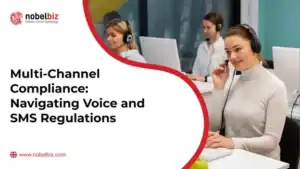Generally speaking, in the contact center space, people tend to look at the one-to-one interaction with an agent as the primary means of obtaining information about products and services.
However, most, if not all, inbound-oriented contact center departments are faced with the problem of a huge influx of trivial inquiries taking up most of the agent’s time. This makes the contact center business or department inefficient and unable to promptly solve more serious issues by generating long call queues and ramping up the wait time.
As we will see, the main goal of a self-service system is to reduce the time the agents spend on simple, repetitive tasks or transactions such as paying a bill or getting account balance information.
“Besides freeing up a considerable amount of agent time and creating a better overall customer experience, a self-service solution for contact centers can also be the foundation for considerable cost savings.” – Carl Stuerke.
In this article, we will talk about what steps should be taken before implementing a self-service platform and the different available types of self-service customer experience solutions.
The basic philosophy of self-service is that individuals should be empowered to achieve their goals rather than relying on contact center agents for assistance. A functioning self-service system generally empowers clients with the tools and resources necessary for their inquiries. Besides the general benefits discussed in this article, a self-service experience can promote a sense of autonomy and independence among your client base.
In the contact center industry, self-service makes information available to customers through automated means, such as web-based portals, chatbots, automated phone systems, etc.
Self-service solutions are designed to help customers quickly find the answers to their questions and resolve their issues without interacting with a live agent. In general terms, a self-service system aims to reduce the time and resources spent dealing with customer requests and to provide customers with a more convenient and efficient way to access the information they need.
Benefits of Deploying Self-Service as a Contact Center
Of all the benefits we will discuss further in this article, one stands out as the most compelling incentive for contact centers to implement a self-service system. You guessed it; it’s money. Here’s the simple math.
Research from Benchmark Portal found that, on average, 15% of customer inquiries are handled through self-service. This could result in considerable financial savings for contact centers; for instance, if a 100-seat call center has agents handling an average of 10 calls per hour and deploying Interactive Voice Response (IVR) technology to reduce the total time spent on each phone call by one minute, the cost savings could exceed $250,000 per annum.
In short, yes, self-service is cheaper.
Other Benefits of a Solid Self-Service Solution
All right, maybe the main benefit of implementing a self-service strategy as a contact center might have been pretty obvious. Cutting costs and saving hundreds of thousands of dollars per year? Yes, please! However, a good self-service strategy can benefit a contact center business or department in many ways. So first, let’s look at how it impacts the main protagonists of a contact center: agents and clients.
How Can Self-Service Benefit Agents?
In short, the tasks that take up time and aren’t productive tend to go away, making your agents happier and more likely to stick around.
- Self-service systems can reduce the time spent on trivial tasks and allow agents to focus on more complex issues, increasing the team’s productivity.
- Besides being a tedious task, manual verification makes room for many errors. The automated system can provide customers with accurate information, eliminating agents’ need to verify details manually.
- A Self-service system will naturally help to reduce costs associated with all the manual processes agents usually get caught in.
- Last but not least, a well-thought self-service system will reduce the manual labor associated with customer service and make agents’ jobs more enjoyable, thus contributing to a reduced turnover rate. Who would have thought that a self-service setup could also contribute to the well-being of your HR department?
What About the Clients?
 Here’s how Carl Stuerke summarized this during his Self-Service Workshop (now available for free on-demand):
Here’s how Carl Stuerke summarized this during his Self-Service Workshop (now available for free on-demand):
Clients benefit from faster service, shorter wait times for complex issues, and accurate information on their first attempt. This creates a more convenient customer experience that allows them to access the data quickly without having to call multiple times or speak with an agent. All of this makes it easy for clients to get what they need anytime, anywhere!
In short, a self-service platform can:
- Provide customers with faster access to information and services. For example, clients don’t need to go through a lengthy account verification process with an agent on the phone to check their balance.
- Reduce wait times as customers can access information and services without waiting for an agent.
- Provide customers with a more personalized, efficient experience.
- Customers can access services anytime and anywhere without respecting the contact center’s schedule.
Self-Service in Multiple Scenarios
Self-service systems can work great for both inbound and outbound contact centers.
For inbound centers, self-service systems can reduce the workload on agents by allowing customers to quickly and easily access information on their own. For outbound centers, self-service systems can automate processes such as data entry and lead generation, freeing agents to focus on more complex tasks.
Of course, self-service can benefit virtually any industry that interacts with clients and customers, which is another way to say that these technologies can be applied to any business.
Here are just a few self-service scenarios:
- Operating hours
- Schedules
- Timetable data
- Balance checks
- Confidential data (medical info)
- Audio form data
- DIY technical support
- Show reservations
- Telephone surveys/research
- Automated ordering and checkout
- Financial details
Questions to Ask
Before rolling up your sleeves and implementing your brand-new self-service system, you must get the right answers to the following questions. They will help you map the specific problems you want to solve and aid you in outlying the perfect plan of action.
- What are the current customer service challenges that clients are facing?
- What types of self-service options would be most beneficial for clients?
- How can self-service options be tailored to meet specific customer needs?
- What types of technology can be used to implement self-service options?
- How can the self-service options be monitored to ensure they meet customer needs?
If you want a more in-depth understanding of how to prepare and plan for deploying your self-service system, watch our free, on-demand, in-depth workshop here. If you want to speak directly with a contact center professional with self-service experience, fill in the form here.
General Challenges
Generally speaking, the better you know your client’s preferences and behaviors. This is why revisiting the list of questions to ask – that we’ve just referenced– could spare you the hassle. As you will see, many challenges are easily avoidable with the right amount of planning and preparation.
- Difficulty in creating a user-friendly self-service system: Creating a self-service system that is simple and intuitive to use can be a real challenge because it requires a deep understanding of customer behavior, preferences, and needs.
- Lack of customer adoption of self-service: Some customers may not feel comfortable using a software-based system and may opt to call in for assistance.
- Overcoming customer resistance: Customers may resist change and not embrace the new self-service system.
- Ensuring customer data accuracy: Self-service systems rely on accurate customer data to function properly.
- Tracking and measurement: It can be not easy to track and measure the success of a self-service system.
- Security and compliance: Self-service systems must comply with applicable laws and regulations. PRO TIP: NobelBiz can help you remain compliant with all the present and future regulations both at the state and federal levels. Learn more here!
- Integration with existing systems: To function properly, self-service systems must be integrated with existing customer service systems.
Here’s a real-life example from Carl Stuerke, our contact center software consultant and self-service expert:
It would be best if you were very careful that you don’t cannibalize the contacts that you want to receive by implementing a self-service campaign. One of the self-service programs that I implemented was really deflecting a lot of the contacts that we didn’t want, but it was also deflecting a lot of the contacts that we did want in one-on-one conversations. So it’s really important to define exactly what the goal of your self-service project is and to make sure that you make changes incrementally and monitor the data so that you don’t cannibalize the context that you’re looking for.
Types of Self-Service Solutions
Self-Service is a general term that covers a broad spectrum of tools, systems, and mechanisms that share the same use case: to streamline the information exchange between a business and its client base. In this next section of our article, we will look at some of the most popular self-service mechanisms, how they work, and the main challenges.
Voice-Based Self-Service (aka. IVR)
A well-implemented IVR self-service solution will greatly improve customer satisfaction and reduce costs. In short, an IVR will allow customers to interact with the system using a touch-tone phone or speaking to the system. The IVR system can give customers general information about their accounts, such as their balances or recent transactions. It can also allow customers to perform certain actions, such as paying a bill or transferring funds.
The General Model:
- The customer receives an automated call with a greeting and a menu of options.
- The customer is guided through a series of automated prompts.
- Depending on the selection, they are directed to an automated voice response or a live agent.
- Customers can leave a “call me back” message or switch to a live agent immediately.
Extra Options:
- The IVR can recognize spoken keywords and phrases and route the call to the appropriate agent or dept.
- The system can use natural language processing to interpret responses and provide further assistance.
- The IVR can track customer data and provide analytics about customer interactions and preferences.
Challenges:
- Callers may prefer to speak to a live agent
- Technophobic callers may not understand how to interact with the system
- Callers may have had bad experiences with automated services in the past
- Bad scripting renders a bad client experience
A great example of this is the banking industry. Almost all banks worldwide have implemented IVR systems to allow customers to access their accounts and perform transactions without speaking to a live agent. As a result, the banks cut costs by reducing the number of agents needed to handle customer calls. It has also improved customer satisfaction by providing customers with a quick and easy way to access their accounts and perform transactions.
You want to make phone trees as easy as possible to navigate. But you also want to give customers the option to escalate quickly. Because when customer faces a complex problem, they want empathy and understanding. And a phone tree is not going to give it to them. – Carl Stuerke
Text-Based (aka Omnichannel) Self-Service Solutions
While voice interactions still rule supreme today, an ever-increasing portion of interactions originate on text-based channels such as SMS, email, or social-media chat apps. This trend pushes contact centers to adapt to the new reality by implementing integrated systems that manage multiple channels simultaneously, ideally in an omnichannel environment.
In short, an omnichannel contact center can manage multiple communication channels simultaneously and from the same place. From voice calls and SMS to WhatsApp, Facebook Messenger, and so on, an Omnichannel platform can run complex campaigns irrespective of the number of channels involved.
Dynamic Text Routing: The foundation of an omnichannel self-service system
The NobelBiz Dynamic Routing system takes the functioning concept of an IVR and applies it to text-based communication channels, using keywords to route incoming emails automatically, SMS, or other text messages, setting the foundation for an omnichannel Self-Service system
When you open your contact center to omnichannel communication, intelligent routing becomes necessary. Dynamic Routing allows NobelBiz OMNI+ to sort and route inbound text-based messages innovatively, cleanly, and efficiently.
Text-Based Channels Covered by NobelBiz OMNI+:
- SMS
- Webchat
- Facebook Messenger
- Telegram
Web Self-Service Portal
A Web Self-Service Portal is an online website or platform that allows customers to access information, submit inquiries, track orders, etc. – without speaking to a customer service representative. A web portal would generally provide customers with an interactive experience, allowing them to search for answers and find the information they need quickly and easily.
Customers can search for answers to their questions, submit tickets, and even chat with customer service agents in real time if they choose to do so. This customer service solution is great for both the customer and the company, as it reduces costs and improves customer satisfaction. However, there are a few things you need to know before deciding to opt for a web self-service system.
Challenges:
- Increased customer expectations: Customers expect a web self-service portal to be easy to use, intuitive, and tailored to their needs. And as you can imagine, meeting these expectations can be difficult and costly.
- Security and privacy concerns: Customers hesitate to share sensitive information and personal details online. Most web-portals services require clients to input (sometimes sensitive) data so the system can recommend the best action for their inquiry.
- Limited customer support: A web self-service portal cannot provide the same level of customer support as a traditional contact center. If the UX component of your web portal is less than perfect, the customers would be better off sticking to a voice interaction instead.
- Technical complexity: A web self-service portal requires technical knowledge and expertise to set up and maintain.
Knowledge Base & FAQ
A Knowledge Base is a centralized repository of information that both customers and agents can access. It contains articles, guides, and other resources that answer common questions and issues. A Knowledge Base can help contact centers create a solid self-service system by providing customers with the information they need to solve their problems and as a reliable reference for the agents. This can reduce the number of calls and chats agents have to handle, freeing them up to focus on more complex issues.
Unlike a web self-service portal, a knowledge base does not provide customers with an interactive experience nor allow them to submit inquiries or track orders.
Similarly, a good FAQ section can also help customers find the information they need quickly and easily. Therefore, a well-designed FAQ section should be easy to navigate and contain answers to customers’ most common questions.
Challenges:
- Ensuring the Knowledge Base is up-to-date: Ensure the content is current to provide accurate and helpful information.
- Keeping the Knowledge Base organized: The information needs to be organized logically so customers can find what they need quickly and efficiently.
- Building a Knowledge Base that is comprehensive: It is important to ensure that it is comprehensive to provide customers with all of the information they may need.
- Measuring the effectiveness: It is important to measure the effectiveness of the Knowledge Base to ensure that it is providing helpful information to customers and meeting their needs.
Conclusion and Final Remarks
Companies should consider the benefits of Self-Service when making decisions about their general customer service strategy. Self-Service technologies are becoming increasingly popular in the contact center space because they provide customers with a more efficient and convenient service. One of the biggest incentives for deploying a self-service system is that it can help reduce costs. With the right implementation, Self-Service can be an invaluable asset to your contact center.
Self-Service can be the key to providing a more personalized and streamlined customer experience. As the demand for customer service grows, companies should consider the benefits of Self-Service in contact centers to remain competitive.
Automation of customer services is rapidly becoming the norm in today’s digital era. The NobelBiz team can help you not only decide if a self-service solution would be a good fit for your business but also help you and your team design a fully functioning omnichannel self-service ecosystem. Get in touch with one of our experts here!

Michael McGuire is a contact center industry expert with almost two decades of experience in the space. His experience includes roles as Director of Contact Center Digital Transformation at NobelBiz, and as Director of Operations at FLS Connect, managing multiple call centers. As President of Anomaly Squared and Targeted Metrics, Michael successfully transitioned companies into remote operations and significantly boosted revenues. With a strong background in customer service, leadership, strategic planning, and operations management, Michael excels in driving growth and innovation in the call center space.
Mike is also a proud Board Member for R.E.A.C.H Trade Group, promoting consumer protection and satisfaction and Co-host of the Off Skripted Podcast – a show about Life, Call Centers and everything in between.





